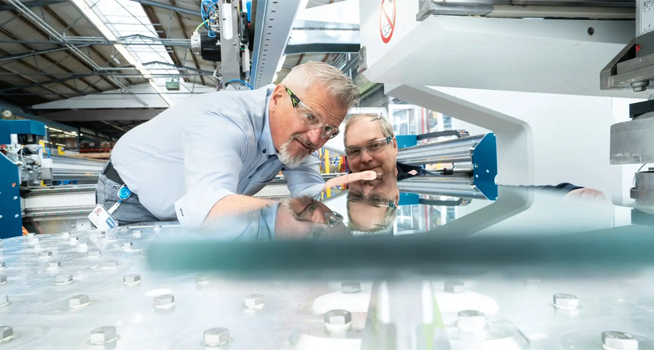Energy efficiency is one of the key ways to make the electricity used in production go further. Each time energy is saved, it cuts down on the electricity bill. This significantly contributes to mitigating climate change and increasing profitability.
Glaston continues to push the development of modern glass processing technology to meet production needs with significantly lower electricity consumption.
Advancing energy savings in glass tempering technology
“Glaston is developing advanced heating and cooling technologies for the best glass quality, outstanding energy efficiency and reliable automation,” said Riku Färm, Director at Heat Treatment Technologies. “Our tempering lines with advanced heating control make it possible to increase loading efficiency and decrease energy without sacrificing quality. With recent technology solutions, quenching energy can even be optimized.”
Minimize energy losses in glass lamination
The easiest way to save energy when laminating glass is to upgrade from a traditional infrared heater furnace to full convection technology. Energy losses are minimized, as the same air is recirculated inside the furnace. The right amount of energy stabilizes the furnace temperature. Processors often report energy savings of at least 50 percent after a heating technology upgrade.
Convection cuts energy use in automotive glass processing
Heating technology is also key in bending and tempering automotive glass. With its targeted and efficient heat transfer, convection heating minimizes energy loss during the process.
Convection provides uniform heating for bending both clear and printed glass surfaces. For wind-shield and sunroof processing, convection minimizes the number of old-fashioned reflection plates, saving more energy per unit produced.
“In automotive glass pre-processing, energy can even be recovered,” said Robert Prange, SVP of Automotive & Display Technologies. “Energy is fed back into the grid by decelerating the tools with electric motors. In addition to that, our lightweight equipment saves up to one-third of the energy required by conventional machines.”
Save energy by simplifying insulating glass production
The Glaston Thermo Plastic Spacer (TPS®) system produces IG units with only one machine instead of several components. This reduces cycle times and saves energy by completing daily production faster.
“Glaston’s latest washing and drying machine automatically switches the drying zone off when the glass plate is dry. This reduces washing machine energy use by 25 percent, while the closed water circuit further reduces water consumption,” said Uwe Risle, Director at Insulating Glass Technologies.
Boost energy with upgrades
“A secure way to ensure energy efficiency is to maintain the equipment together with the Glaston experts and original spare parts,” said Artturi Mäki, SVP Services. “Then, upgrading an existing glass processing line with the latest technology leads to significant energy improvements without investing in an entirely new line. Most of our latest technology is available as an upgrade, making it quick and efficient to increase capacity, reach better output quality and yield, reduce maintenance and improve uptime.”





